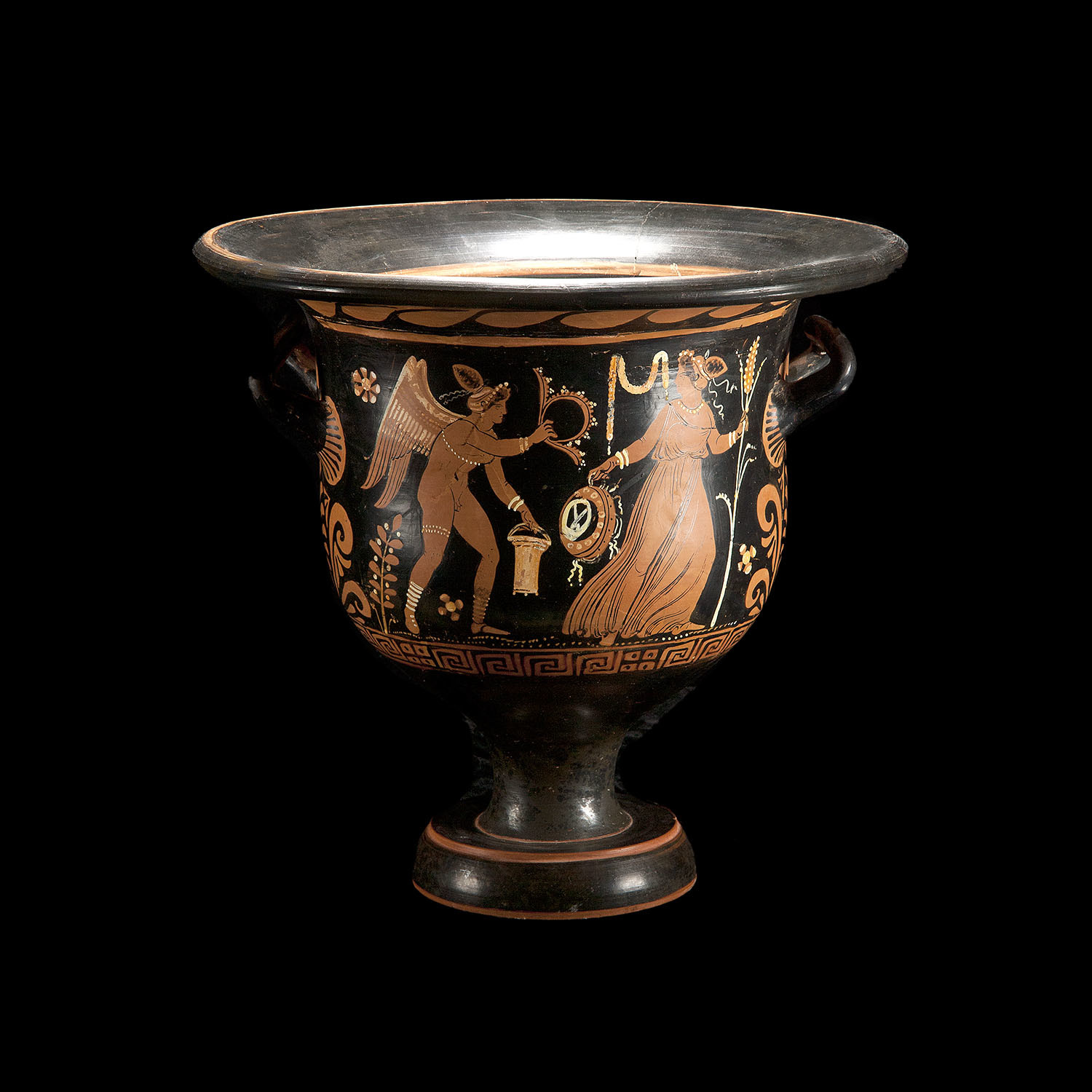ezra
Member
- Sep 17, 2012
- 6,179
- 2,624
i ran across this found it interesting
https://www.crosswalk.com/video-q-a...utm_campaign=ab&utm_medium=cwpg&utm_term=paid
Gary Habermas
The following is a transcribed Video Q&A, so the text may not read like an edited article would. Scroll to the bottom to view this video in its entirety.
"Ancient history rarely is established on the grounds that we prefer in ancient historiography. We would like early and eyewitness accounts. Everybody likes early eyewitness accounts. Not all eyewitness accounts are early. We want an eye witness account, told as close to the data as possible. I mean, Livy to use one example, roman historian. He talks about things that happened in the founding of Rome hundreds of years before his earliest sources. Our earliest sources for Alexander are 300 years later, and the best sources for Alexander are plus four and a quarter to plus 450. People say the gospels are hopelessly prejudiced and we can't get anything out of them beginning at plus 40, 40 years after Jesus. It's just like, you know, let's just apply some principles here and talk about history.
Yes, early eyewitness evidence can be wrong. What would you rather have, late non-eyewitness evidence? You can only take your best evidence, even in court cases today. Now here's how we get the early and eyewitness evidence for the appearances of Jesus. Paul is a witness that skeptics allow. They will allow about half of Paul's books as authentic. Interestingly enough, they will allow the main books that Christians want to use. Two of the ones they will always allow: 1 Corinthians and Galatians are two. In those books, Galatians for example, Paul says he became a Christian. Galatians 1:16 as the book starts. He says "I didn't go up to Jerusalem right away. I went out to be alone with the Lord for three years, and then I went up to Jerusalem." We can do the math on this, because the skeptics do it too. That appearance to Jerusalem by Paul takes place about three years after the cross. That's where most New Testament scholars place it.
If you place the cross at 30 AD, that trip to Jerusalem is about 33. Paul spends 15 days with two apostles, IE eyewitnesses: Peter, James the brother of Jesus. The three of them are together. They key to the book of Galatians is the nature of the gospel. They're discussing, among other things, the gospel for 15 days. If I were Paul, my first question would be "Peter, I'll tell you what you saw. I mean, you know, no offense, but you denied him three times. James, I mean I know you're a spiritual guy and everything and you're the pastor of this church in Jerusalem, but no offense, I was a persecutor I understand, but I hear you didn't even believe when your brother was walking around. What got you guys here?" You can't imagine them being there for 15 days and not talk about the resurrection. It's the key to the Christian faith.
Now, Bart Ehrman, who is a very well known skeptic says "Paul got this material just a very few years after the cross." Think about this. This is Bart Ehrman, best known skeptic in America, non-Christian. He says, "Paul got to interview Peter and James. I'd like to interview Peter and James." Then he says, "This is as close to eye witness testimony as we can get. It's very close to eye witness testimony." Three years after the cross from guys who believe they saw the risen Jesus. How do you know? Well they teach that and then they were willing to die for it.
Now you say, "Well, I'm so tired of that. A lot of people are willing to die today." Yes, right, but today people are willing to die for those guys' testimony or Mohammad's testimony, or somebody else's Buddha, what they believe would be Buddha's testimony. It has to only transform your life enough that you're willing to die for them. I says, "But you don't know if it's true or false." The disciples were in a place to know if it was true or false, and they were willing to die for it. The key here is they were willing to die for a message for which they were in a position to know if it were true or false, right or wrong.
14 years later, Galatians 2, Paul goes up there again. In Galatians 2:2 Paul says, "I set before them the gospel I was preaching to see if I was running or had run in vain." He's saying, "guys, are we all on the same page?" Just a few verses later are these five words in English. "They added nothing to me." They added nothing to me. Then just a few verses later they laid the right hand of fellowship on Paul and Barnabas, so they all agreed the nature of the gospel. The resurrection is an indispensable portion of it. Nobody believes that it's not.
Paul goes there, checks it out. To be the best way to get early eyewitnesses are these talks that Paul had right after the cross with Peter, with James the brother of Jesus, of course himself, and Galatians two John is there. How far would you go to hear these four guys speak? These are the four best known, most influential Christians. They're all there talking about the nature of the gospel. That's how we know. 1 Corinthians 15:11 Paul says "they're preaching the same message I am. Go ask them if you don't believe me. They'll tell you the same thing." It's that togetherness from the early eyewitnesses that makes the resurrection faith so credible, you know, the appearances."
https://www.crosswalk.com/video-q-a...utm_campaign=ab&utm_medium=cwpg&utm_term=paid
Gary Habermas
The following is a transcribed Video Q&A, so the text may not read like an edited article would. Scroll to the bottom to view this video in its entirety.
"Ancient history rarely is established on the grounds that we prefer in ancient historiography. We would like early and eyewitness accounts. Everybody likes early eyewitness accounts. Not all eyewitness accounts are early. We want an eye witness account, told as close to the data as possible. I mean, Livy to use one example, roman historian. He talks about things that happened in the founding of Rome hundreds of years before his earliest sources. Our earliest sources for Alexander are 300 years later, and the best sources for Alexander are plus four and a quarter to plus 450. People say the gospels are hopelessly prejudiced and we can't get anything out of them beginning at plus 40, 40 years after Jesus. It's just like, you know, let's just apply some principles here and talk about history.
Yes, early eyewitness evidence can be wrong. What would you rather have, late non-eyewitness evidence? You can only take your best evidence, even in court cases today. Now here's how we get the early and eyewitness evidence for the appearances of Jesus. Paul is a witness that skeptics allow. They will allow about half of Paul's books as authentic. Interestingly enough, they will allow the main books that Christians want to use. Two of the ones they will always allow: 1 Corinthians and Galatians are two. In those books, Galatians for example, Paul says he became a Christian. Galatians 1:16 as the book starts. He says "I didn't go up to Jerusalem right away. I went out to be alone with the Lord for three years, and then I went up to Jerusalem." We can do the math on this, because the skeptics do it too. That appearance to Jerusalem by Paul takes place about three years after the cross. That's where most New Testament scholars place it.
If you place the cross at 30 AD, that trip to Jerusalem is about 33. Paul spends 15 days with two apostles, IE eyewitnesses: Peter, James the brother of Jesus. The three of them are together. They key to the book of Galatians is the nature of the gospel. They're discussing, among other things, the gospel for 15 days. If I were Paul, my first question would be "Peter, I'll tell you what you saw. I mean, you know, no offense, but you denied him three times. James, I mean I know you're a spiritual guy and everything and you're the pastor of this church in Jerusalem, but no offense, I was a persecutor I understand, but I hear you didn't even believe when your brother was walking around. What got you guys here?" You can't imagine them being there for 15 days and not talk about the resurrection. It's the key to the Christian faith.
Now, Bart Ehrman, who is a very well known skeptic says "Paul got this material just a very few years after the cross." Think about this. This is Bart Ehrman, best known skeptic in America, non-Christian. He says, "Paul got to interview Peter and James. I'd like to interview Peter and James." Then he says, "This is as close to eye witness testimony as we can get. It's very close to eye witness testimony." Three years after the cross from guys who believe they saw the risen Jesus. How do you know? Well they teach that and then they were willing to die for it.
Now you say, "Well, I'm so tired of that. A lot of people are willing to die today." Yes, right, but today people are willing to die for those guys' testimony or Mohammad's testimony, or somebody else's Buddha, what they believe would be Buddha's testimony. It has to only transform your life enough that you're willing to die for them. I says, "But you don't know if it's true or false." The disciples were in a place to know if it was true or false, and they were willing to die for it. The key here is they were willing to die for a message for which they were in a position to know if it were true or false, right or wrong.
14 years later, Galatians 2, Paul goes up there again. In Galatians 2:2 Paul says, "I set before them the gospel I was preaching to see if I was running or had run in vain." He's saying, "guys, are we all on the same page?" Just a few verses later are these five words in English. "They added nothing to me." They added nothing to me. Then just a few verses later they laid the right hand of fellowship on Paul and Barnabas, so they all agreed the nature of the gospel. The resurrection is an indispensable portion of it. Nobody believes that it's not.
Paul goes there, checks it out. To be the best way to get early eyewitnesses are these talks that Paul had right after the cross with Peter, with James the brother of Jesus, of course himself, and Galatians two John is there. How far would you go to hear these four guys speak? These are the four best known, most influential Christians. They're all there talking about the nature of the gospel. That's how we know. 1 Corinthians 15:11 Paul says "they're preaching the same message I am. Go ask them if you don't believe me. They'll tell you the same thing." It's that togetherness from the early eyewitnesses that makes the resurrection faith so credible, you know, the appearances."





